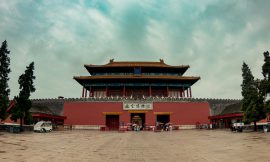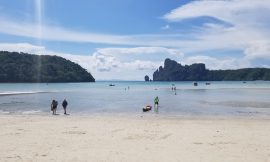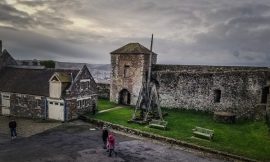We bought a tour to visit the man-made Uros Islands and Taquile Island the day before. It’s a fairly early start with the tour agency’s minivan picking us up from our hotel at around 7 AM. Once everyone has been picked up, we were dropped off at the pier where the guide was waiting for us. We then boarded a speedboat and were off to the man-made floating islands of Uros. It’s a short 30-minute journey to these islands which are located 7 KM from Puno. We were allowed to head up to the roof of the boat to take pictures throughout the journey. Once at Uros, there are over 90 floating islands and we got off at one called Apu Kontiki. We were welcomed by the community who lived on that island who invited us to sit in the communal area. The guide then gives us some information on the schedule and overview of Uros. He mentions that it takes between 8 and 12 months to build an island and they have a lifetime of about 25 years.
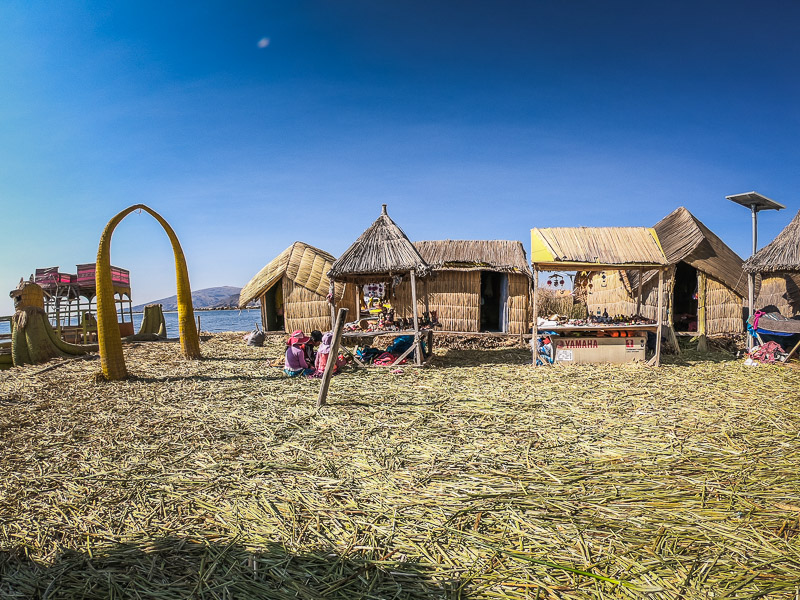

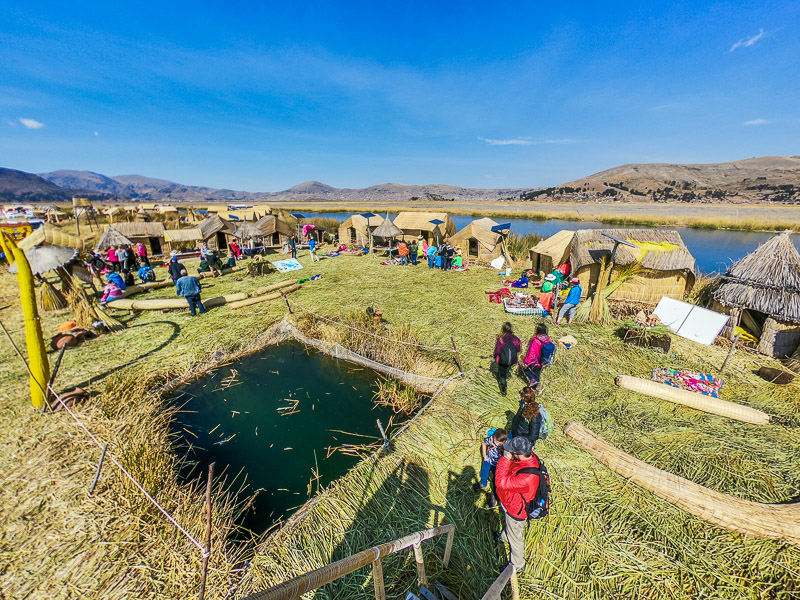

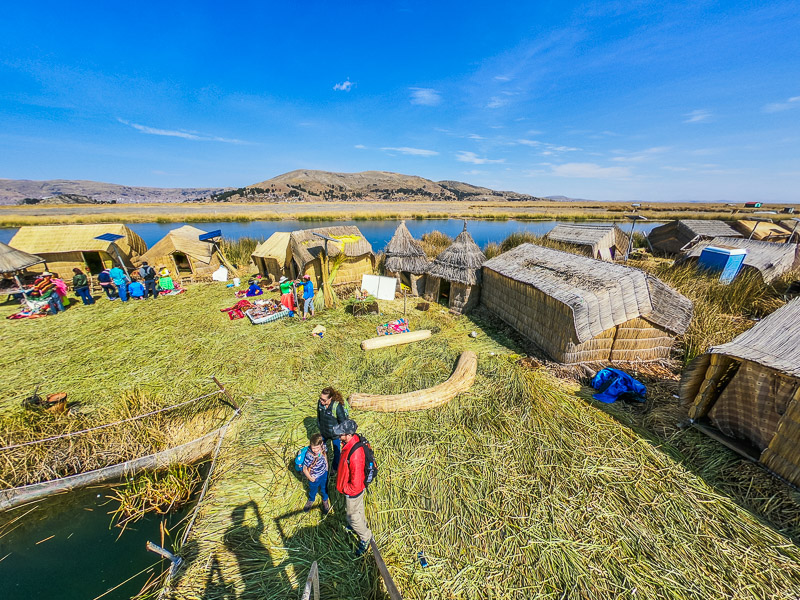

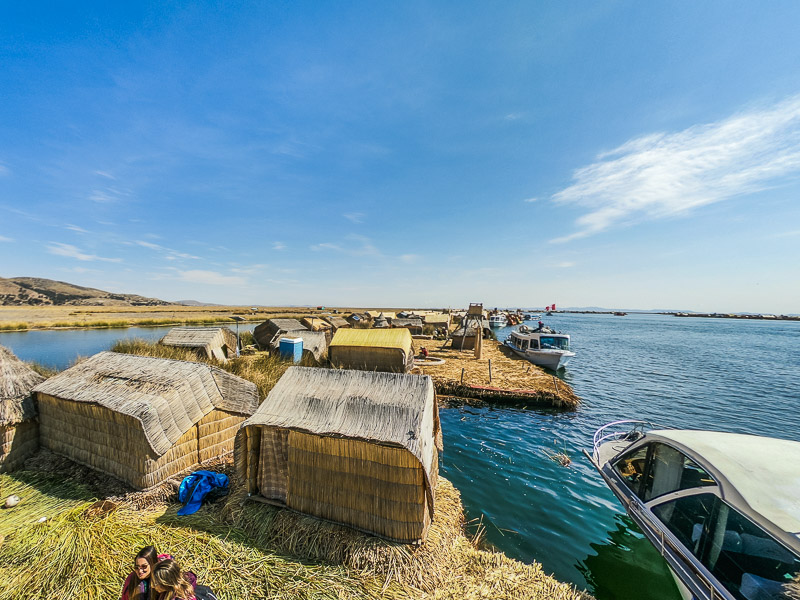

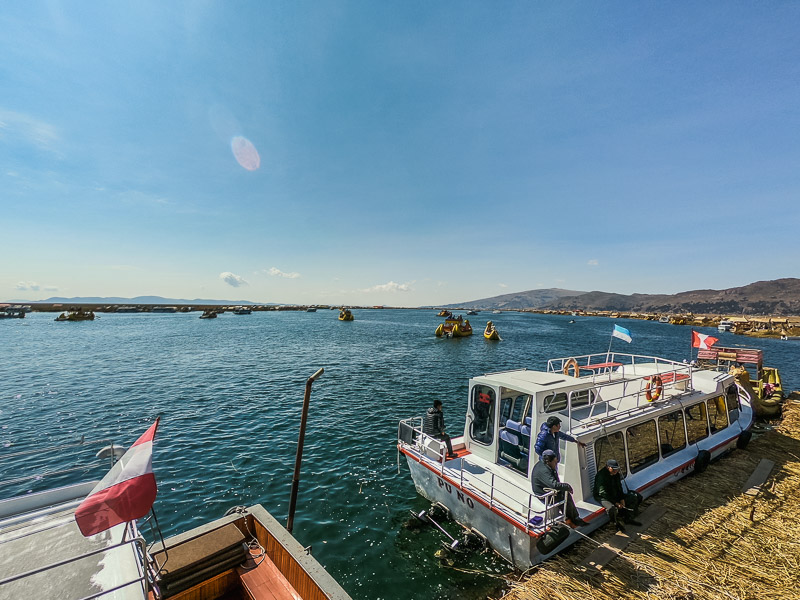

The guide then lets the president (leader) of the island introduce himself in the Aymara language. The guide then tells us that 5 families live on the island totaling 20 people. Next, we’re told about how the islands are made from a combination of soil, roots, and leaves of the Lake Titicaca vegetation. The guide mentions that they eat the white part of the leaves and passed some around for us to try. These leaves are also used to build the houses and in their arts and crafts. They source the soil and roots 8 km from Uros between January and March when the soil naturally floats from the seasonal rise in water levels. The president then does a demonstration of how they cut and tie the soil blocks together. He then places layers of leaves on top and says they build the houses from dry leaves. The president then talks about the boats they have and mentions the larger one is for the tour groups. For food, they mainly fish or hunt birds. Legally, only they are allowed to consume the wildlife in Lake Titicaca. They then rely on money from tourism to buy food in the markets. Next, we are invited to visit the inside of one of the houses and walk around the island before heading to the capital island. The president offers to take you there on their larger tour boat, however, it’s not included in the tour so make sure you take some cash (5 PEN1 each) if you’d like to take this boat. At the capital island, there is a viewpoint tower and also a Uros stamp which you can put on your passport. There’s also a stall to buy drinks and snacks before heading to Taquile.
The boat from Uros to Taquile takes 1 hour on the speedboat and we reached the island at around 11 AM. On the bigger boats, it takes up to 3 hours so make sure you ask what type of boat you’ll get before buying a tour. From the pier, we walk up to the main plaza for 30-45 minutes. It’s an uphill walk at over 4000 meters above sea level, so the guide sets meeting points to take breaks. We reached the main plaza at around noon and there happened to be a parade on that day. We were given about 30 minutes to wander around, so we found a way to get onto the roof of one of the buildings to look at the parade from there. There are also shops and street vendors selling drinks and snacks.
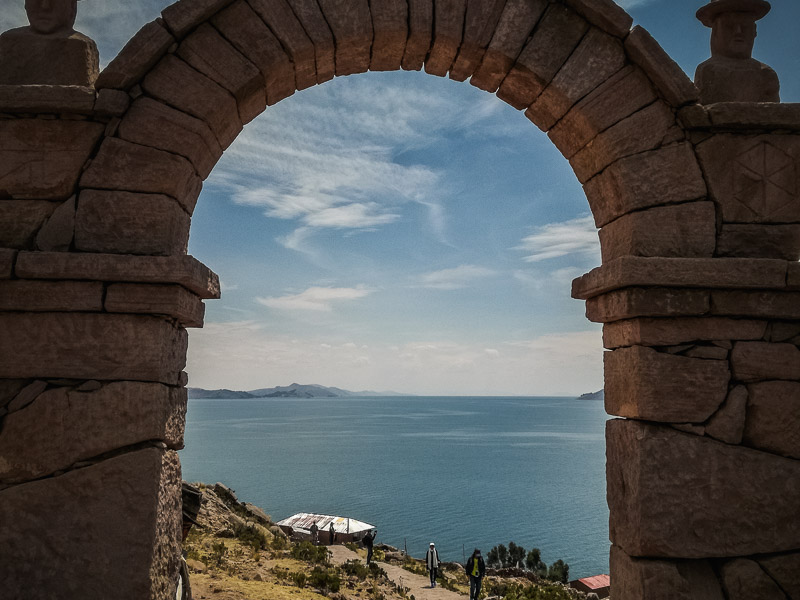

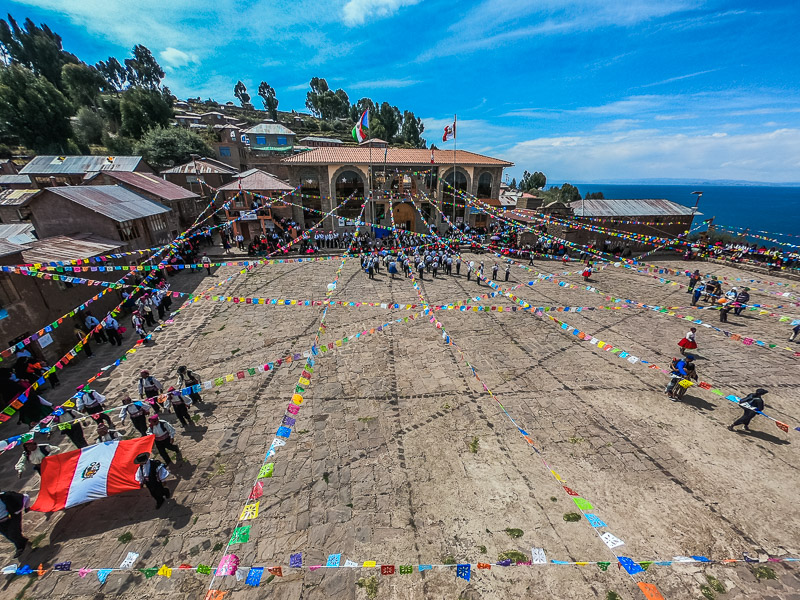

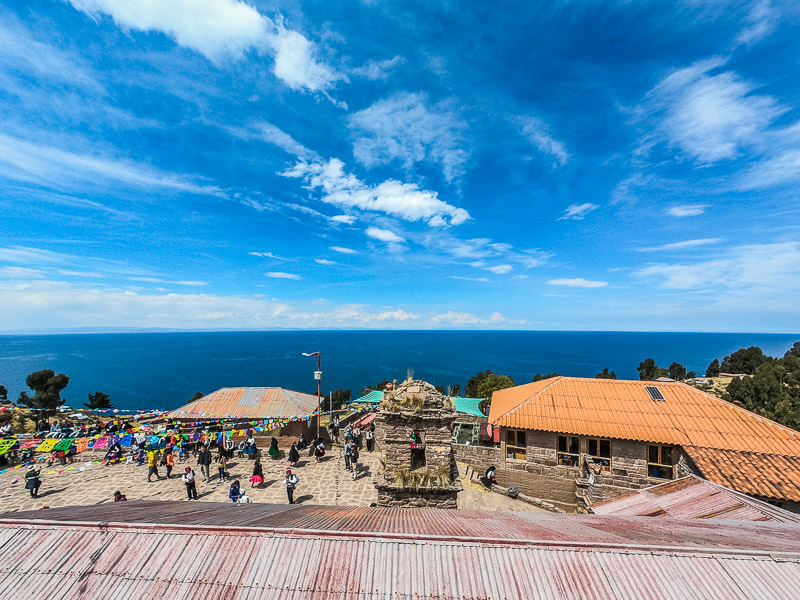

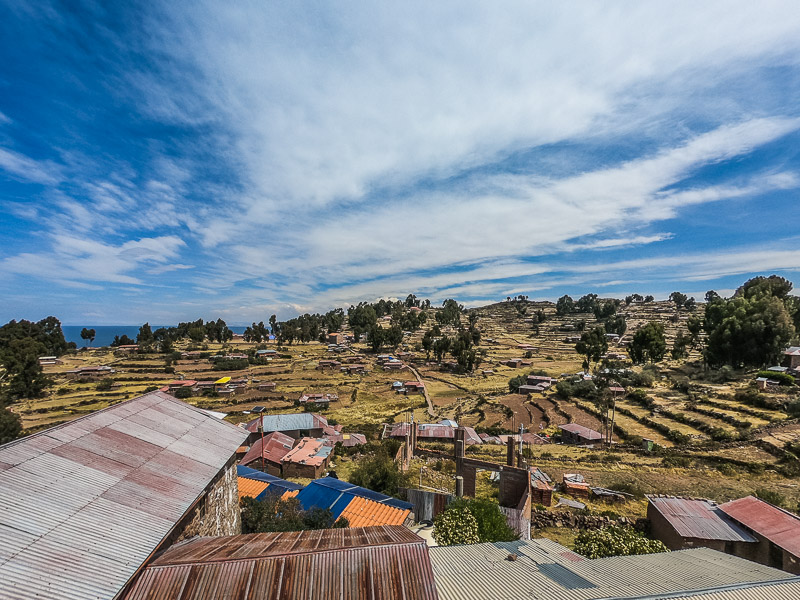

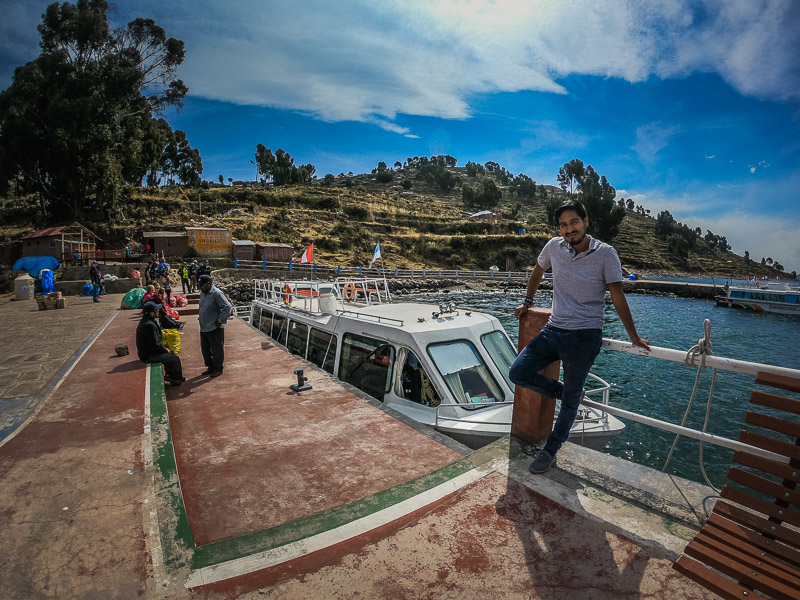

Once the group met up again, the guide took us to the lunch stop at one of the local restaurants. They took our orders and while we waited, the locals there gave a demonstration of how the men knit their hats. They said they are taught from very young and they knit it so tightly, that the hat has to be watertight. They first showed us how they wash the materials using a local plant. Everyone was in awe at how the wool went from a muddy brownish color to white in their process. They then show us how they add color and knit the hats. This is then followed by a dance demonstration and singing. They even invited people up to dance with them. With the pre-lunch entertainment over, the food arrived. After lunch, we walked another 20 minutes downhill to another pier which wasn’t as tiring as the way up. Our boat arrived at around 2.30 PM to pick us up and take us back to Puno. It took about an hour and a half to get back to Puno. The minivan was there waiting for us to take us back to the city center, however, we opted to stay at the pier to browse the local stalls. It’s only a 15-20 minute walk back to the city center from the pier.

